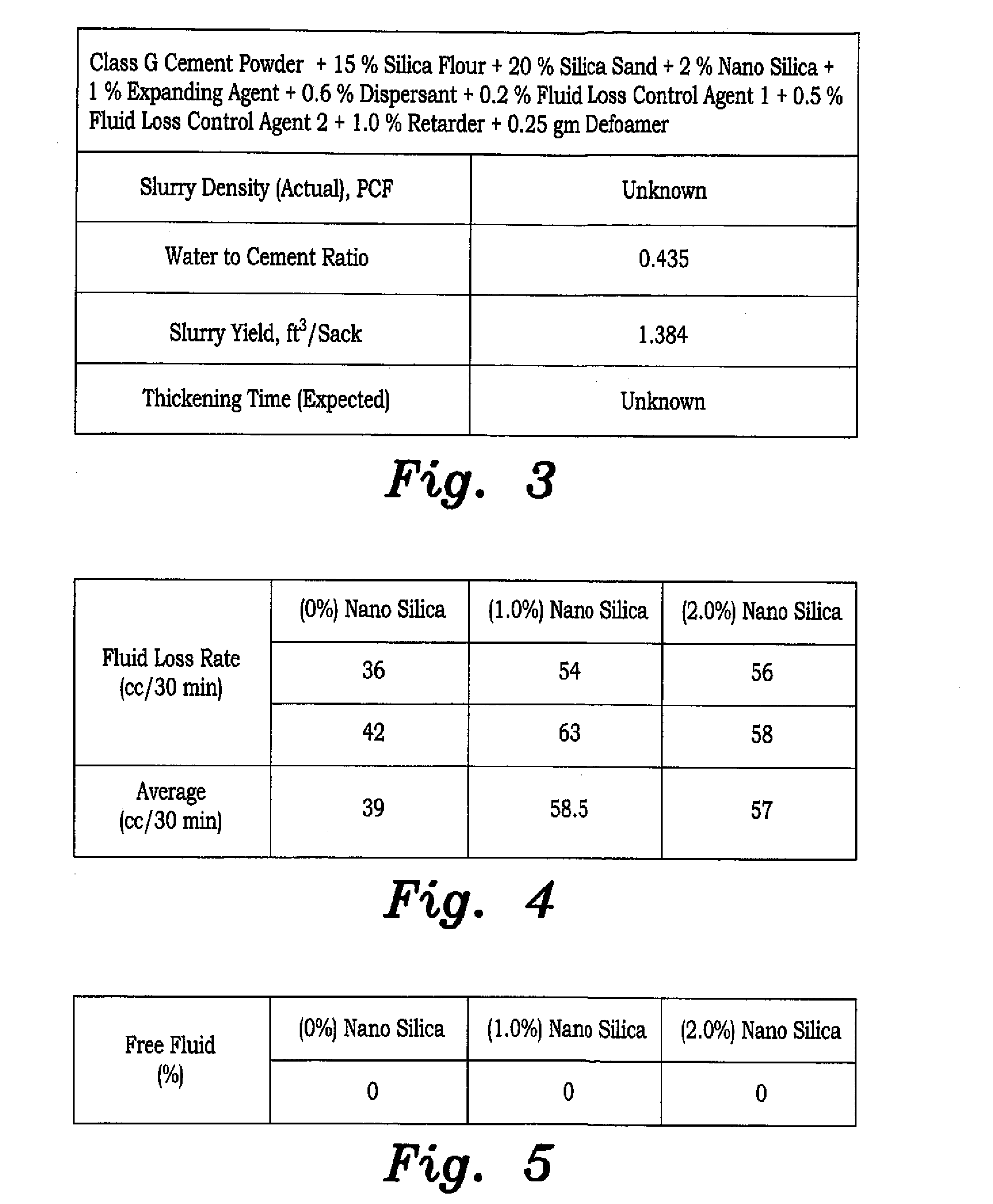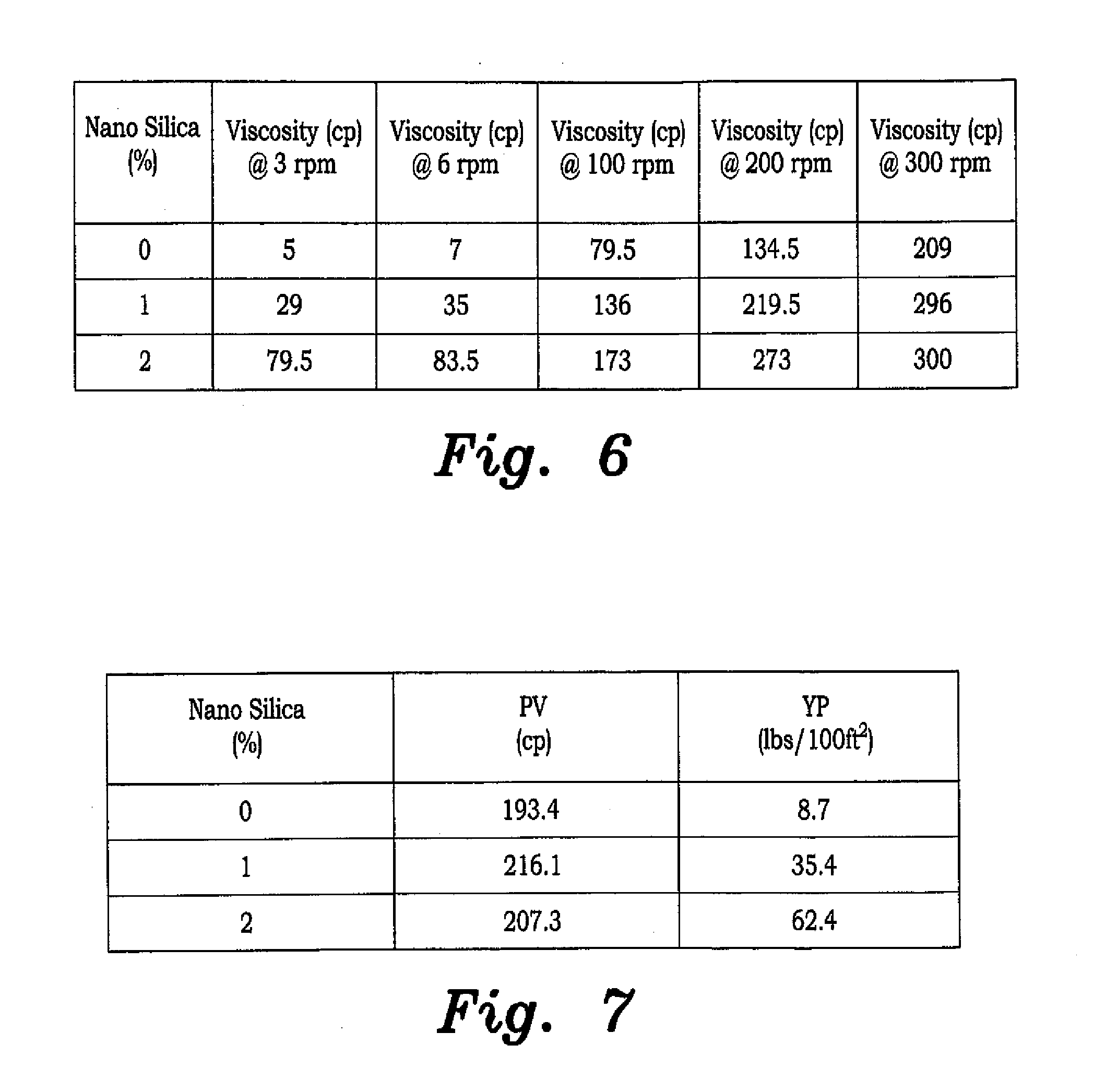Portland cement type-g with nanosilica additive for high pressure-high temperature applications
a technology of nanosilica additive and portland cement, which is applied in the field of cement, can solve the problems of poor cementing job, affecting the success of any oil and gas well, and affecting the quality of the cement, so as to prevent fluid loss
- Summary
- Abstract
- Description
- Claims
- Application Information
AI Technical Summary
Benefits of technology
Problems solved by technology
Method used
Image
Examples
Embodiment Construction
[0049]The Portland cement type-G for high pressure-high temperature applications of the present invention includes a mixture of: about 2% by cement weight of nanoparticles of hydrophilic silica; and type-G Portland cement forming the balance of the mixture. The cement so formed is suitable for use in petroleum wells, which require cement that can be introduced under high temperature and high temperature conditions.
[0050]Cement lab testing is an important process used to evaluate and develop different properties of the cement system, and to attempt to mimic the actual behavior of the cement in high pressure high temperature downhole environment.
[0051]The experiments described herein are implemented according to the American Petroleum Institute (API) procedures. See American Petroleum Institute, Specification for Materials and Testing for Well Cements, API Spec. 10, 1990, 5th Ed., Washington, D.C.: American Petroleum Institute.
[0052]The experiments described herein include several cem...
PUM
| Property | Measurement | Unit |
|---|---|---|
| temperatures | aaaaa | aaaaa |
| temperature | aaaaa | aaaaa |
| temperature | aaaaa | aaaaa |
Abstract
Description
Claims
Application Information
 Login to View More
Login to View More - R&D
- Intellectual Property
- Life Sciences
- Materials
- Tech Scout
- Unparalleled Data Quality
- Higher Quality Content
- 60% Fewer Hallucinations
Browse by: Latest US Patents, China's latest patents, Technical Efficacy Thesaurus, Application Domain, Technology Topic, Popular Technical Reports.
© 2025 PatSnap. All rights reserved.Legal|Privacy policy|Modern Slavery Act Transparency Statement|Sitemap|About US| Contact US: help@patsnap.com



